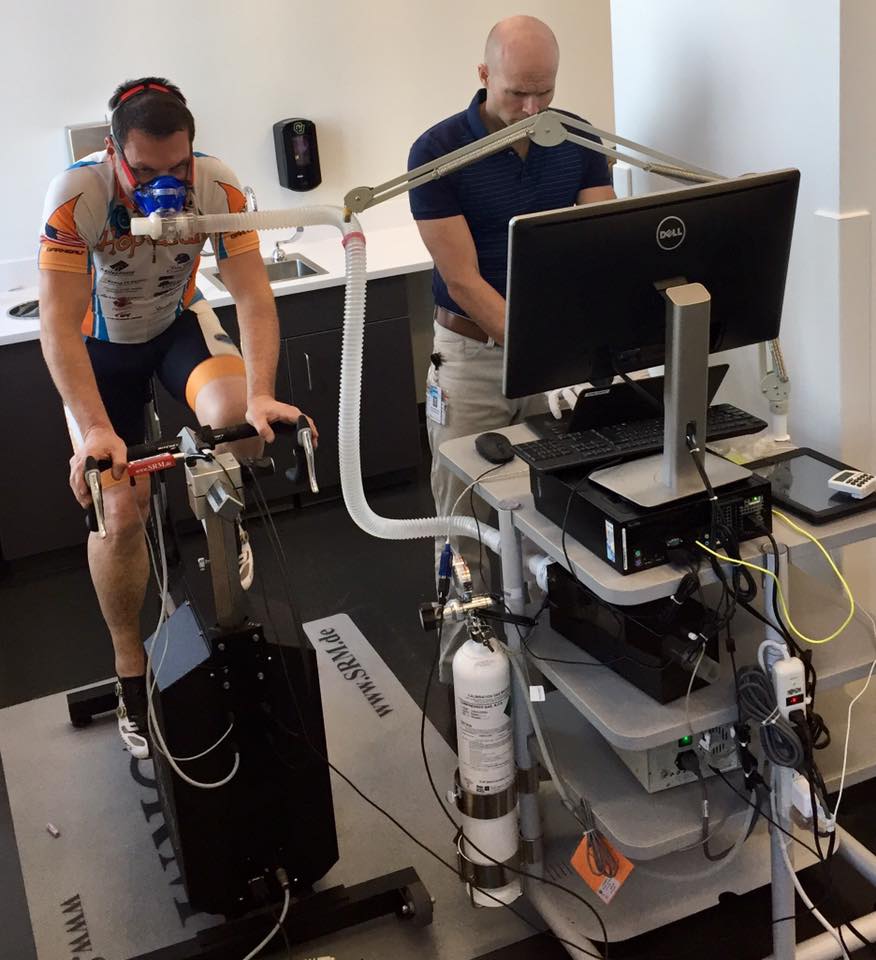On March 10th, I arrived in Boulder Colorado for a full day of testing and consultation on a bike fit for the new Specialized Roubaix that I'll ride during the Race Across America.
The Sports Medicine lab moved from the Boulder Hospital Center to the University Colorado Boulder campus about a year ago. In fact Rob Pickels who was a leader in the lab, gave me a tour when I was in town for a road race in July 2015. The facility is one of the finest labs in the world with state of the art equipment and a team of scientists that have more degrees than a thermometer.
At 7 am I arrived and met with the technician and former pro triathlete Jared Berg who would perform the metabolic stress test to better measure my output, efficiency and capacity converting fuel to power on the bike. They hook you up to a machine that measures the amount of carbon dioxide that is expelled as you pedal on a bicycle with increasing resistance over a 60 minute time frame. It's kind of like a mask with a plastic tube that sticks out and connects to a computer. You're also wearing a chest strap that measure your heart rate as the tension on the pedals increases. Once you start pedaling the bike, they slowly increase the resistance which makes you work harder. These increases are measured in watts. Every 4 minutes they increase the workload by 50 watts. The second test they perform during this test is called a "lactate threshold test". To accurately measure the amount of lactic acid (LA) your body produces the technician pricks your ear lobe and places a drop of blood on a wireless sensor device that measures lactic acid in your blood at different watt outputs every four minutes.
The intent is to see at what rate of power output will your blood begins to accumulate excess LA. Lactic acid makes your muscles cramp and if you can maintain a power output below the LA threshold you can pedal a bike all day and night without causing damage to your body. When I performed the test in 2012, we discovered that if I could maintain 185 watts of power and a heart rate if 105 I could average 15 miles per hour and ride all day.
At the end of the test it was determined that I could generate 190 watts of power at the same heart rate level as in 2012. This meant that over the five years of training I have become more efficient at burning fat and converting fuel to power. The bad news is that I was not able to complete the test from fatigue after an hour on the bike. This may have been influenced by being 5,000 feet above sea level. It also could have been from a deficit in training due to cold weather in Virginia. All things considered, I felt pretty good about the metabolic test and my fitness level and vowed to return in May and get re-tested prior to racing.




